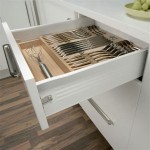Essential Aspects of Moulding Kitchen Cabinets
Mouldings play a vital role in enhancing the aesthetic appeal and functionality of kitchen cabinets. They not only add intricate details but also conceal gaps and transitions, creating a seamless and polished look. Understanding the essential aspects of moulding kitchen cabinets is crucial to achieve a sophisticated and well-executed result.
Types of Mouldings
There are numerous types of mouldings available, each with its unique profile and purpose. Some common types include:
- Cove Moulding: A concave profile that adds a graceful curve to the bottom of cabinets.
- Crown Moulding: An ornate profile with a projecting lip, used to top cabinets and create the illusion of height.
- Base Moulding: A simple profile that covers the gap between the floor and the bottom of the cabinets.
- Light Rail Moulding: A narrow strip of moulding that creates a transition between upper and lower cabinets.
- Valance Moulding: A flat or curved piece that conceals the underside of upper cabinets.
Material Selection
Mouldings are typically made from wood, plastic, or metal. The choice of material depends on factors such as durability, moisture resistance, and cost. Wood mouldings offer a classic and natural look, while plastic mouldings are lightweight and affordable. Metal mouldings provide added strength and longevity.
Installation Techniques
Mouldings can be installed using various techniques, including:
- Nail Gun: A quick and efficient method for securing mouldings to cabinets.
- Brad Nailer: A more precise option that uses smaller nails for a less noticeable finish.
- Miter Saw: Used to cut moulding pieces to the desired angle for seamless corners.
- Glue: Can be used in conjunction with nails or as an adhesive alone.
Finishing Touches
Once the mouldings are installed, it's essential to apply finishing touches to enhance their appearance:
- Sanding: Smoothing out any rough edges or imperfections.
- Caulking: Filling any gaps or joints to prevent moisture penetration.
- Painting or Staining: Applying a finish to match the color and style of the cabinets.
Conclusion
Moulding kitchen cabinets is an essential aspect of creating a visually appealing and functional kitchen space. By understanding the different types of mouldings, material selection, installation techniques, and finishing touches, you can achieve a polished and sophisticated look that will enhance the beauty and functionality of your kitchen for years to come.

Adding Crown Molding To Kitchen Cabinets Young House Love

11 Kitchen Cabinet Crown Molding Ideas For Your

3 Ways To Enhance Your Kitchen With Crown Molding

Diy Kitchen Cabinet Upgrade With Paint And Crown Molding

Crown Moulding The Recently Rediscovered Kitchen Solution

Decorative Molding Timberlake Cabinetry

Crown Molding For Shaker Kitchen Cabinets

7 Types Of Cabinet Moldings And How To Use Them Properly

Adding Moldings To Your Kitchen Cabinets Remodelando La Casa

Adding Crown Moulding To Wall Kitchen Cabinets Momplex Vanilla Ana White
Related Posts








